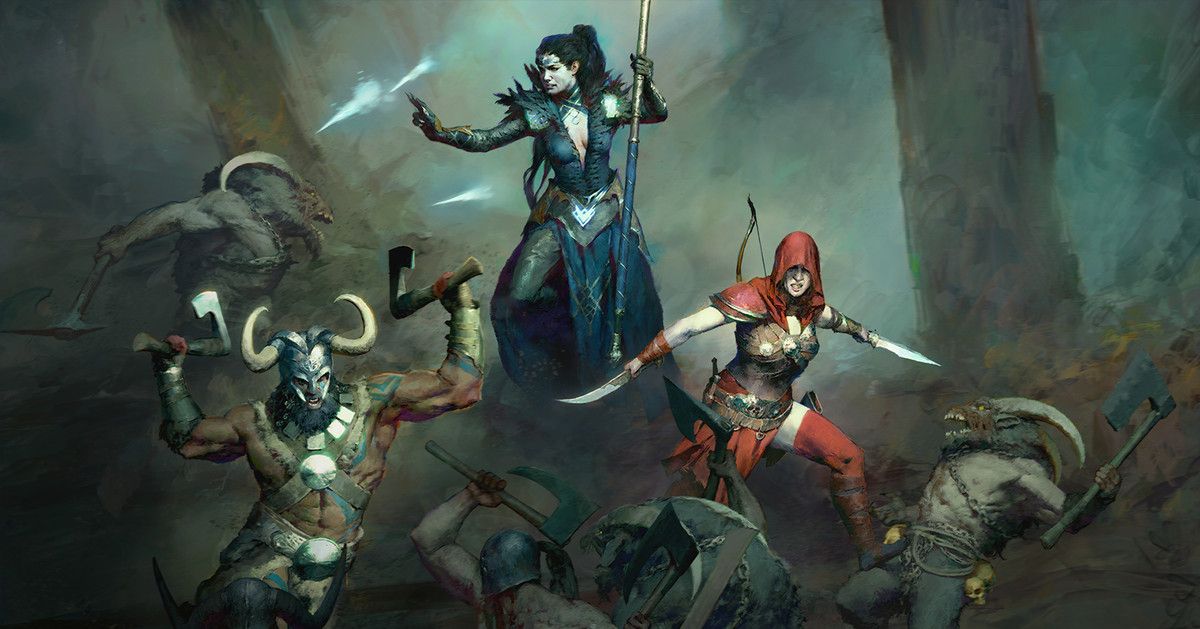Diablo 4’s character customization comes at a cost, unlike Diablo 3’s
Respec costs — in other words, how difficult it is to respecialize and change your character build — are an emotive issue for the Diablo community. The last two mainline games in the series have espoused very different philosophies: Diablo 2 made it very difficult indeed, while Diablo 3 did away with not just respec costs but skill trees altogether, and allowed characters to be reshaped on the fly.
Diablo 4 is cautiously picking out a route somewhere between these two, as lead class designer Adam Jackson described in a roundtable call with press, which Polygon attended, last week. Early in the game — to all intents and purposes, for the length of the campaign, which should take you to level 50 of 100 — respeccing your character is “very, very cheap, to the point that it’s essentially free,” he said. But after that, as you sink into Diablo 4’s endgame, it gets much more expensive.
“We have to balance this idea that we want players to commit to a fantasy and a character and have actual weight and meaning to their choices,” Jackson said. “But we also want them to feel free to customize their characters and explore and try different builds and fantasies and ways to play.”
Related Diablo 4 is getting a surprise open beta before launch
Jackson explained what he saw as the pros and cons of Diablo 2’s and Diablo 3’s respective approaches. Essentially, he loves how invested a Diablo 2 player will be in their hyper-specific build and play style, both in terms of optimizing it and buying into a specific fantasy. This is something he wants to emulate in Diablo 4 — only without the fear of making a mistake that discourages experimentation, or hampers learning the game, early on.
“If you can’t respec your character forever, then that means that you’re really committed to your fantasy, and you’re really rewarded for thinking about your build and planning that out,” Jackson said. “And every time you restart the game, you’re actually motivated to go through it again, and try this new, completely different way of playing. And there’s a lot of good rewards there. But it comes with the cons that you know, you’re very scared to do your building.”
For him, Diablo 3’s completely freeform approach isn’t the answer, though. “It comes with some downsides: The attachment that you have to your character you’re building, and your fantasy isn’t nearly as strong,”
“I would say our system or our vision is somewhere in the middle [...] Everything kind of is on a spectrum, where you know, you’ve got one end that’s completely like one way of doing things, and the other end is completely the other way. And a lot of times, our answer is somewhere in the middle. And then depending on feedback, we may move it up or down that slider.”
Jackson says that the Diablo 3 playstyle of bending your character to suit the loot that you find should be viable through the campaign, but that later on, the build will come first, and you’ll be looking to find or alter loot to fit. But he’s anxious to point out that, at level 100, loot is just one of many places of investment that contribute to specializing your character, including Paragon points (which are essentially post-level cap leveling) and the new Codex of Power — a suite of Legendary skills that are awarded for completing specific dungeons and can be collected and equipped at will.
While it might not sound like the strongest design philosophy — especially in the shadow of Diablo 4’s two diametrically opposed forebears — there is something distinctive to Diablo 4’s way of doing things. Within the tougher choices that the team wants players to make, they also want those players to have more freedom and more options for how to get there. This is why they’ve taken the bold step of removing super-powerful item sets — the holy grail of Diablo loot collection — from the game.
“As much as we can, we’re trying to chase a more open ended design in a way where the players can choose how they want to get to their destinations,” Jackson says. “When it comes to sets [...] we give you an endpoint, but then there’s only one road to get there, which is to acquire these two or three or six very specific items. And our north star in Diablo 4 is that we don’t want to be that prescriptive.”
All of which raises the question of Runewords, the extremely powerful and flexible gear customization system from Diablo 2 that would seem to fit right in with the Diablo 4 team’s design goals. When I mentioned them, Jackson laughed coyly.
“We like Runewords,” he said. “They’re very cool. We don’t have anything to announce as far as if they’re gonna be in the game in the immediate future. We do think they’re still a really cool idea.
“And that’s all I’m gonna say right now,” he added, pointedly.
Diablo 4 will be released on June 6 for PlayStation 4, PlayStation 5, Windows PC, Xbox One, and Xbox Series X. Without Runewords — for now.
Source: Polygon


